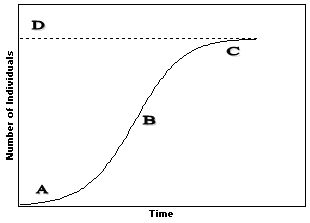In order to prove that a bacterium is pathological according to Koch’s postulates, the ____
a. bacteria must be present in most cases of the disease
b. bacteria must be isolated from the infected host and grown in mixed culture
c. specific disease must be induced when a pure culture of the bacteria is introduced into a healthy host
d. bacteria must be isolated from a transfer host
e. bacterium must produce spores that can be transmitted from one individual to another
ANSWER: c
You might also like to view...
Type I survivorship curves
a. are characteristics of humans and elephants. b. typify a population in which all ages have an equal chance of survival. c. indicate a high mortality rate in the very young. d. show that very few young are produced, that each is given parental support, and that most individuals live a relatively long life and die of old age. e. are typical of annual plants
Using Figure 53-2, identify the point that indicates the carrying capacity for this population
a. A
b. B
c. C
d. D
e. Cannot be determined from this graph.
Which subatomic particles are always equal in neutral atoms?
a. electrons, neutrons and protons b. electrons and protons c. neutrons and protons d. electrons and neutrons e. nucleus and orbits
Which of the following is not true regarding ribosomes?
A. They contain an A site and a P site. B. They translate RNA into protein. C. They contain both RNA and protein. D. They function within the nucleus. E. They are composed of two subunits.